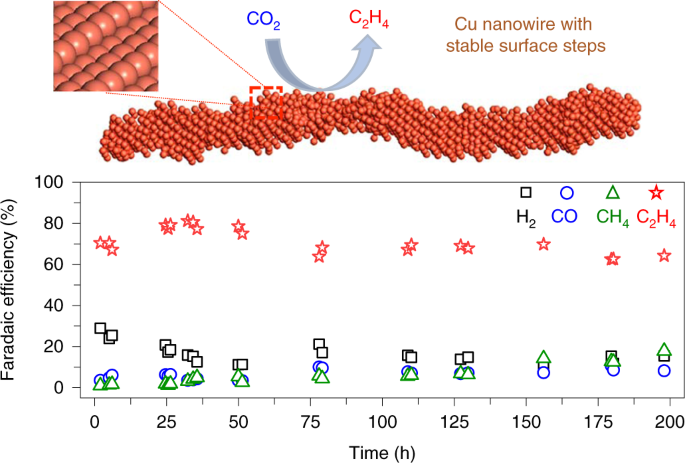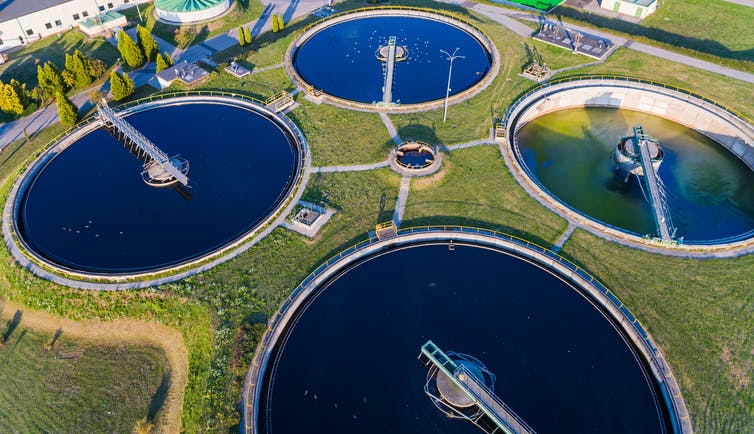(Generating renewable hydrogen fuel from the sea)
2020/9/29 アメリカ合衆国・ペンシルベニア州立大学(PennState)

・ PennState が、海水を使用した水電解技術を開発。
・ 豊富な海水と沿岸・海洋の風力や太陽エネルギーを組み合わせた水電解による水素の製造は、最も持続可能な手法として期待されているが、海水に含まれる塩化物イオンは機器の劣化や環境負荷となる有害な塩素ガスの原因となるため、コストのかかる淡水化処理が必要。
・ 今回、電解槽でカソードとアノードの 2 本の電極を隔てるイオン交換膜を逆浸透(RO)膜で代替。海水は RO 膜によってカソード側に保持され、分子の大きな塩化物イオンは RO 膜を透過してアノード側へ移動できないため、塩素ガスが生成されない。アノードで水分子が分解されて水素イオン(プロトン)と酸素ガスが放出され、プロトンは RO 膜を透過してカソードで電子と結合し、水素ガスとなる。
・ 水電解では導電性の向上のため意図的に水に塩を溶解させているが、イオン交換膜はこれを透過させる。RO 膜はこれをブロックするが、電流の発生には 2 本の電極間でのイオンの移動が不可欠。そのため、十分な量のプロトンの移動が重要となる。
・ 市販の RO 膜とカチオン交換膜(正電荷イオンを透過させるイオン交換膜)をそれぞれ 2 種類用意し、イオンの移動に対する抵抗、反応に必要なエネルギー量、水素と酸素ガスの生成、塩化物イオンとの相互作用と膜劣化について試験を実施。1 種類の RO 膜でカチオン交換膜よりも優れた性能を確認したが、この理由については現在調査中。
・ 同技術の研究チームは、海水の水電解の研究に米国立科学財団(NSF)より 30 万ドルのグラントを受領している。例えばサウジアラビアでは、50 億ドルをかけて海水による水素製造施設の建設を予定するなど、世界では再生可能な水素生成技術の研究が実施されている。
・ 本研究は、PennState 社会環境工学科の Stan and Flora Kappe Endowment、NSF、米国国際開発庁および米国科学アカデミー、また、PennState からの追加的な資金により支援された。
URL: https://news.psu.edu/story/633345/2020/09/29/research/generating-renewable-hydrogenfuel-sea
<NEDO海外技術情報より>
(関連情報)
Energy & Environmental Science 掲載論文(アブストラクトのみ:全文は有料)
Using reverse osmosis membranes to control ion transport during water electrolysis
URL: https://pubs.rsc.org/en/content/articlelanding/2020/EE/D0EE02173C#!divAbstract
Abstract
The decreasing cost of electricity produced using solar and wind and the need to avoid CO2 emissions from fossil fuels has heightened interest in hydrogen gas production by water electrolysis. Offshore and coastal hydrogen gas production using seawater and renewable electricity is of particular interest, but it is currently economically infeasible due to the high costs of ion exchange membranes and the need to desalinate seawater in existing electrolyzer designs. A new approach is described here that uses relatively inexpensive commercially available membranes developed for reverse osmosis (RO) to selectively transport favorable ions. In an applied electric field, RO membranes have a substantial capacity for proton and hydroxide transport through the active layer while excluding salt anions and cations. A perchlorate salt was used to provide an inert and contained anolyte, with charge balanced by proton and hydroxide ion flow across the RO membrane. Synthetic seawater (NaCl) was used as the catholyte, where it provided continuous hydrogen gas evolution. The RO membrane resistance was 21.7 ± 3.5 Ω cm2 in 1 M NaCl and the voltages needed to split water in a model electrolysis cell at current densities of 10–40 mA cm−2 were comparable to those found when using two commonly used, more expensive ion exchange membranes.



